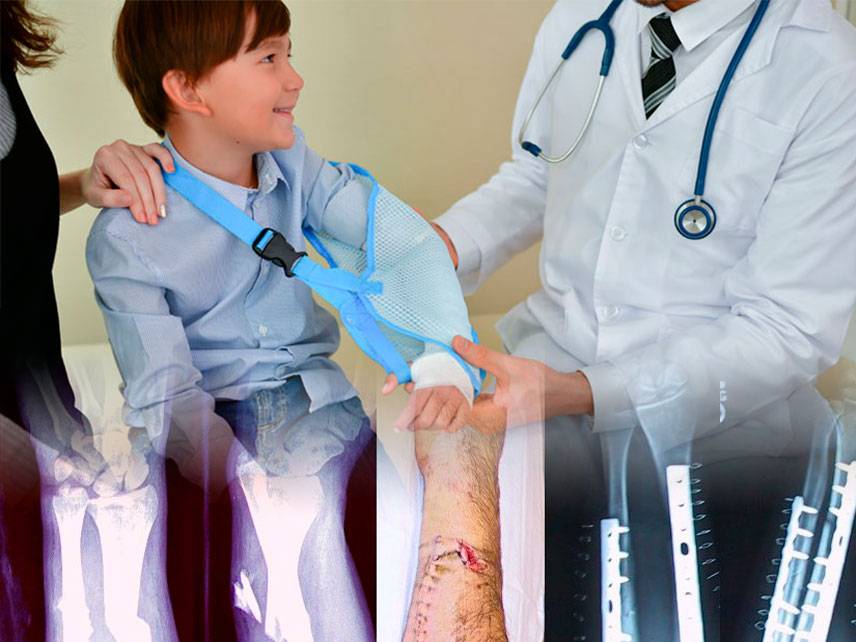A bone fracture is a break, crack, or chip in a bone. It can range from a thin crack to a complete break. Fractures can occur in any bone in the body, but are most common in the wrist, arm, and ankle.
Signs and Symptoms
Signs and symptoms may vary depending on the location and severity of the fracture, but can include:
-
Pain, especially when trying to move the injured area
-
Swelling and bruising
-
Deformity of the injured area
-
Loss of range of motion
-
Tenderness
-
Difficulty using the injured area
-
Stiffness
Causes
Bone fractures can be caused by a variety of factors, such as:
-
Trauma or injury, such as a fall or car accident
-
Osteoporosis, a condition that causes bones to become weak and brittle
-
Bone tumors, which can weaken the bone
-
Overuse, such as repetitive stress on a joint
-
Certain medical conditions, such as cancer or arthritis
Risk Factors
Risk factors for bone fractures can include:
-
Age – as people age, their bones become weaker and more prone to fracture
-
Certain activities – such as contact sports or extreme sports
-
Osteoporosis
-
Certain medical conditions, such as cancer or arthritis
-
Weak or brittle bones
-
Vitamin D deficiency
-
Poor nutrition
-
Certain medications
Prevention
There are several steps you can take to lower your risk of developing a bone fracture. These include:
-
Eating a balanced diet with adequate amounts of calcium and vitamin D
-
Exercising regularly to strengthen bones
-
Avoiding smoking and excessive alcohol consumption
-
Wearing protective gear when participating in contact sports or extreme sports
-
Taking measures to prevent falls, such as using handrails and installing grab bars in the bathroom
Diagnosis
Your doctor will perform a physical examination and ask questions about your medical history to diagnose a bone fracture. Imaging tests, such as X-rays, CT scans, and MRIs may also be used to confirm the diagnosis.
Treatment
Treatment for a bone fracture may vary depending on the type and location of the fracture.
Common treatments include:
-
Splinting or casting – to immobilize the area
-
Medication – to reduce pain and inflammation
-
Surgery – to repair fractured bones
-
Physical therapy – to help restore strength and mobility
Coping and Support
The recovery process for a bone fracture can be a difficult and painful one. It is important to take the necessary steps to ensure a full recovery, such as following your doctor’s instructions, taking medication as prescribed, and attending physical therapy sessions. Additionally, it can be helpful to speak with family and friends for emotional support.
Complications
Complications from a bone fracture can include:
-
Infection
-
Delayed healing
-
Nerve or blood vessel damage
-
Chronic pain
-
Loss of function
Living with Bone Fractures
It is important to take the necessary steps to protect your bones and reduce your risk of fractures. This includes eating a healthy diet, exercising regularly, and avoiding activities that can lead to falls or other trauma. Additionally, it is important to speak with your doctor about any medications or medical conditions that could increase your risk of fractures. With the right care and lifestyle modifications, you can reduce your risk of bone fractures and maintain a healthy lifestyle.
Bone fractures are a common injury that can range from mild to severe. It is important to recognize the signs and symptoms of a bone fracture and seek medical attention immediately. With the right diagnosis and treatment, most bone fractures can heal properly and without complications. Furthermore, it is important to take preventive measures to reduce your risk of fractures and ensure a full recovery.





